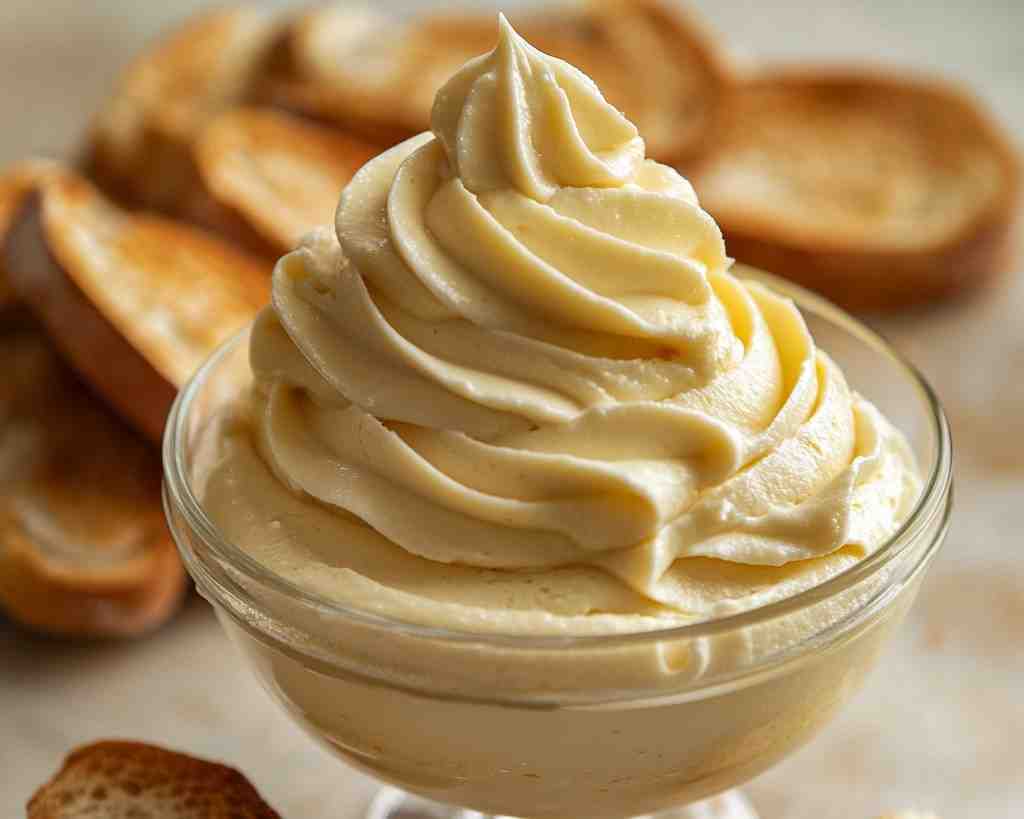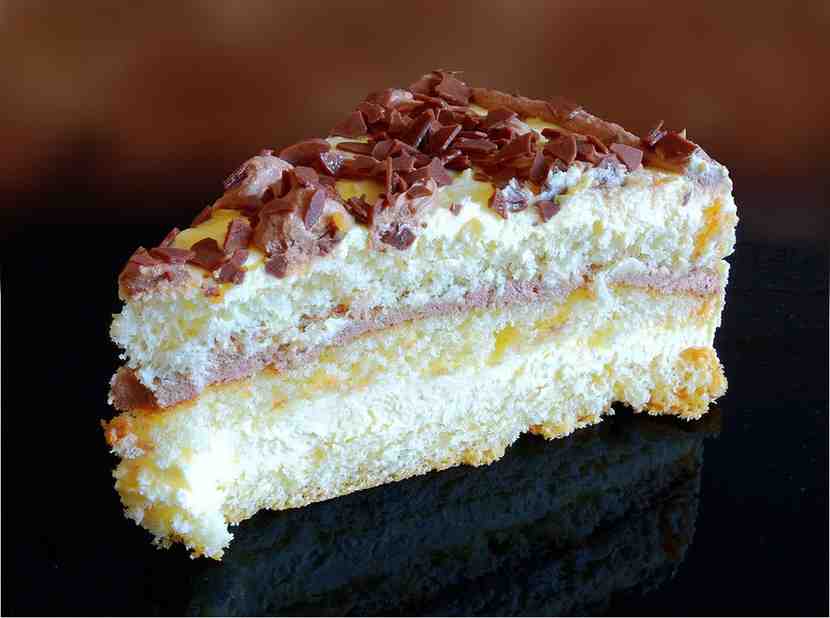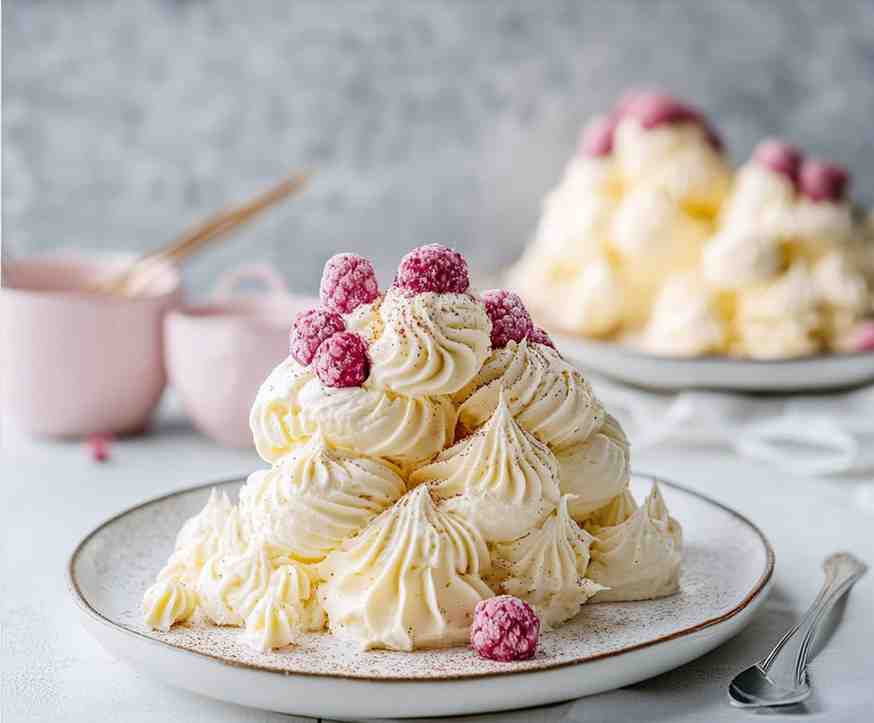Butter mousse is a smooth, airy preparation made with high-quality butter and whipped ingredients to achieve a luxurious texture. This versatile creation has its roots in French patisserie, where it has been cherished for its simplicity and elegance. In this section, we’ll delve into the origins, unique characteristics, and a step-by-step guide for making classic butter mousse at home.
What is Butter Mousse?
Definition and Characteristics
Butter mousse is a whipped blend of butter, sugar, and flavorings, creating a silky texture and a rich, buttery taste. Unlike heavier dessert mousses made with eggs or cream, butter mousse focuses on the quality of its core ingredient: butter. Its lightness comes from the whipping process, which incorporates air to give it a mousse-like consistency.
Key Features:
- Texture: Smooth, airy, and melt-in-your-mouth.
- Flavor: Richly buttery, often enhanced with subtle flavorings like vanilla or citrus.
- Uses: Perfect as a dessert topping, pastry filling, or standalone indulgence.
Origins
The term “mousse” originates from the French word for “foam,” reflecting the airy texture that defines this culinary category. While traditional mousses often use eggs or cream, butter mousse is a simplified yet equally indulgent variation. Its invention aligns with French culinary principles that celebrate the richness and quality of butter.
This unique mousse became popular in patisseries and home kitchens alike, thanks to its versatility and ease of preparation. Today, it remains a go-to choice for creating elegant desserts with minimal ingredients.
How to Make Butter Mousse
Creating butter mousse requires attention to detail, as the process hinges on achieving the right balance of smoothness and airiness. Here’s how you can make a classic butter mousse at home.
Tools and Ingredients Required
Tools:
- Electric Mixer or Whisk: To whip the butter to a fluffy consistency.
- Spatula: For folding in flavorings and ensuring an even texture.
- Serving Dishes or Molds: For presentation and chilling.
Ingredients:
- Unsalted Butter (200g): Softened to room temperature for easy whipping.
- Powdered Sugar (100g): Provides sweetness and ensures a smooth texture.
- Flavoring Extract (1 tsp): Vanilla is a classic choice, but citrus zest or almond extract works well too.

Step-by-Step Recipe Guide
- Prepare the Butter:
Let the butter soften at room temperature for about 30 minutes. It should be pliable but not melted. - Whip the Butter:
Use an electric mixer or whisk to beat the butter until it becomes pale and fluffy. This step incorporates air, which is crucial for achieving the mousse-like texture. - Add Sugar Gradually:
Slowly sift in the powdered sugar while continuing to whip the butter. This ensures the sugar dissolves fully, preventing a grainy texture. - Incorporate Flavoring:
Add your chosen flavor extract or zest and mix gently. Be careful not to overmix, as this can deflate the mousse. - Chill the Mousse:
Transfer the butter mousse into serving dishes or molds. Refrigerate for at least 1 hour to allow it to firm up slightly while maintaining its creamy consistency. - Serve and Enjoy:
Serve as a standalone dessert or use it as a topping or filling for pastries, cakes, or cookies.
Tips for Perfect Butter Mousse
Achieving the Ideal Texture
- Ensure the butter is at the right temperature: too cold, and it won’t whip; too warm, and it will become greasy.
- Whip the butter until it’s visibly lighter in color and texture.
Avoid Over-Mixing
- Mix only until the ingredients are incorporated. Over-mixing can lead to a heavy, dense mousse.
Storing Butter Mousse
- Store in an airtight container in the refrigerator for up to 3 days. Bring to room temperature before serving to restore its creamy texture.
Common Variations
Butter mousse is highly adaptable, making it a canvas for creative flavor combinations.
Sweet Variations
- Chocolate Butter Mousse: Add 2 tbsp of melted and cooled chocolate for a decadent twist.
- Citrus Butter Mousse: Incorporate 1 tsp of lemon or orange zest for a refreshing flavor.
- Spiced Butter Mousse: Add a pinch of cinnamon or nutmeg for warmth.
Savory Variations
- Herbed Butter Mousse: Mix in finely chopped parsley or chives for a savory spread.
- Garlic Butter Mousse: Add roasted garlic paste for a rich, savory topping for bread or steak.
- Cheese-Infused Butter Mousse: Blend in grated Parmesan or blue cheese for a tangy appetizer spread.
Why Make Butter Mousse at Home?
Butter mousse offers a balance of simplicity and sophistication, making it a valuable addition to any kitchen repertoire. Whether you’re preparing a dessert for guests or enhancing your everyday meals, butter mousse is an easy yet impressive option. Its minimal ingredients and short preparation time make it accessible for both beginners and experienced cooks.
Advanced Techniques for Butter Mousse
Butter mousse may seem simple, but advanced techniques can elevate it to new heights. By focusing on precision and creativity, you can transform this classic recipe into a gourmet masterpiece.
Creating Layered Butter Mousse Desserts
Layering butter mousse with complementary textures and flavors enhances its visual appeal and taste. For instance:
- Chocolate and Vanilla Layers: Alternate layers of chocolate butter mousse and vanilla mousse in a glass, topped with crushed nuts or grated chocolate.
- Citrus Parfait: Use lemon butter mousse layered with crushed shortbread cookies and a dollop of whipped cream.
- Berry Medley: Combine butter mousse with fresh berries and fruit compotes for a refreshing summer dessert.
Tips for Layering:
- Use a piping bag to achieve clean and even layers.
- Chill each layer briefly before adding the next to prevent mixing.
Creative Culinary Uses of Butter Mousse
Butter mousse’s versatility extends far beyond desserts. Here are some innovative ways to use it in your culinary adventures.
As a Frosting
Butter mousse works as a silky, flavorful frosting for cakes, cupcakes, and cookies. Unlike traditional buttercream, it has a lighter texture, making it ideal for delicate cakes like chiffon or sponge.
Pro Tip:
- For a firmer frosting, refrigerate the butter mousse briefly before spreading.
Savory Pairings
Butter mousse can add richness to savory dishes:
- On Steaks or Seafood: A dollop of herbed butter mousse can be used as a finishing touch for grilled steaks or seared salmon.
- With Bread: Spread garlic-infused butter mousse on warm bread for an elevated appetizer.
- In Mashed Potatoes: Stir in a savory butter mousse to create creamy, flavorful mashed potatoes.
Filling for Pastries
Butter mousse is a perfect filling for pastries such as éclairs, cream puffs, and croissants. Its rich yet airy texture complements the flaky or soft layers of baked goods.

Global Variations of Butter Mousse
Butter mousse’s French roots have inspired variations around the world, often influenced by local ingredients and culinary traditions.
Japanese-Inspired Mousse
In Japan, butter mousse is often combined with matcha (green tea powder) for a slightly bitter, earthy flavor. This variation pairs well with traditional Japanese sweets like mochi or dorayaki.
Mediterranean Flavors
Butter mousse infused with honey and orange blossom water is popular in Mediterranean-inspired desserts. It can be served alongside baklava or layered with pistachios and phyllo dough.
Tropical Twists
In tropical regions, butter mousse is often flavored with mango, passion fruit, or coconut. These bright, tangy flavors balance the richness of the butter.
How to Store Butter Mousse
Proper storage ensures that butter mousse retains its texture, flavor, and freshness.
Short-Term Storage
- Refrigeration: Keep butter mousse in an airtight container in the refrigerator for up to 3 days.
- Serving Prep: Let it sit at room temperature for 10–15 minutes before serving to restore its creamy texture.
Long-Term Storage
- Freezing: Butter mousse can be frozen for up to 1 month. Portion it into small, airtight containers to make thawing easier.
- Thawing Tips: Defrost in the refrigerator overnight and whip lightly before serving to regain its airy texture.
Common Mistakes to Avoid
- Storing Without Cover: Butter mousse can absorb odors from the fridge, altering its flavor.
- Repeated Thawing and Freezing: This can cause separation and compromise the mousse’s texture.
Tips and Notes for Perfect Butter Mousse
Here’s a table summarizing essential tips and helpful notes to ensure your butter mousse turns out perfectly every time.
| Tip | Note |
|---|---|
| Use High-Quality Butter | Choose unsalted butter made from fresh cream for the best flavor and texture. |
| Soften Butter Correctly | Let the butter sit at room temperature for 30 minutes. It should be soft but not melted. |
| Whip Thoroughly | Beat the butter until pale and fluffy to incorporate air, which gives the mousse lightness. |
| Add Sugar Gradually | Sifting the powdered sugar and adding it slowly prevents lumps and ensures smoothness. |
| Incorporate Flavorings Carefully | Gently fold in flavorings like extracts or zests to maintain the mousse’s airy texture. |
| Chill Before Serving | Refrigerate the mousse for at least 1 hour to let it firm up and develop its flavors. |
| Use a Piping Bag for Precision | For elegant presentation, use a piping bag to layer or decorate desserts. |
| Avoid Overmixing | Overmixing can deflate the mousse and make it dense. Stop mixing once ingredients are combined. |
| Maintain the Right Temperature | Keep all ingredients at room temperature to ensure smooth blending. |
| Store Properly | Use airtight containers to prevent the mousse from absorbing fridge odors. |

